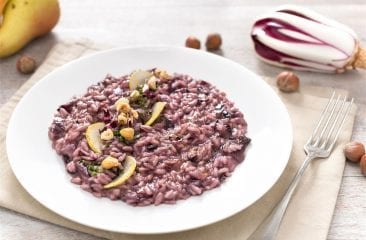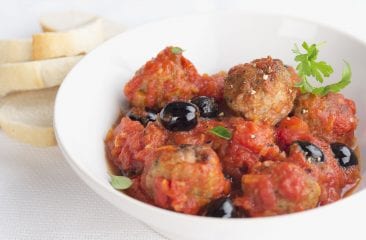Type the word ‘olives’ into Google and you’ll get over 93 million hits! And, the range of ‘olives’ you encounter will be wider than you thought: it turns out that olives are not only small oval fruits but also two key areas of the brain, hose connection pieces used in laboratories, the earpieces of acoustic stethoscopes, and at the end of retractable feeding tubes! Enough digression. Today we are taking a look at the real kind of olive – the fruit of the olive tree.
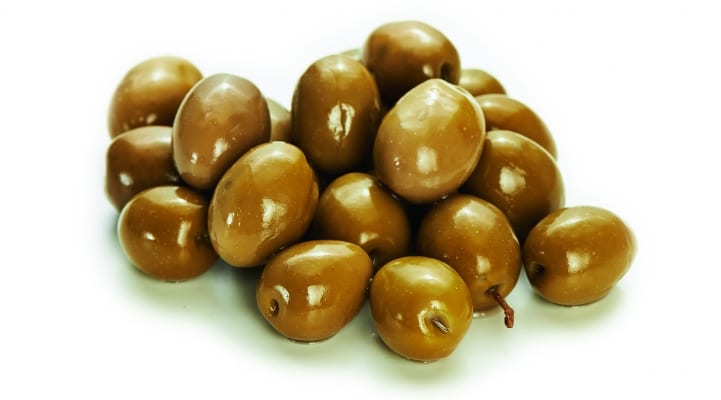
And, what better way to start than with a few interesting facts…
* Olive trees can live to be over 1,000 years old.
* The older an olive tree, the better its fruit.
* High-quality olive oil is designated by the term Extra Virgin (English), Vierge Extra (French), Extra Vergine (Italian), Virgen Extra (Spanish) and Nativen (German).
* In recent years, the highest levels of olive oil consumption have been in Spain (11 litres per capita) and Greece (10 litres per capita). Germany, in comparison, lags far behind at only 1 litre per head of population.
* The colour of olive oil varies from greenish-brown to light yellow, depending on the ripeness of the fruit and on the substances contained therein. The colour is not an indication of the quality of the olive oil.
* Olive oil is good for dry hair. Simply massage pure olive oil into your hair after washing, leave it in for at least one hour, and then rewash with a mild shampoo. Your hair will shine beautifully and your scalp will have had a real treat.
* About 90% of all olives harvested worldwide are processed to make oil; by contrast, only about 10% are used as table olives. Table olives are the olives that you can buy at the market or in the supermarket served with garlic or chilli, stuffed with almonds or simply by themselves in oil.
* Depending on the variety, it takes between 5 and 10 kg of olives to make 1 litre of olive oil.
The olive tree
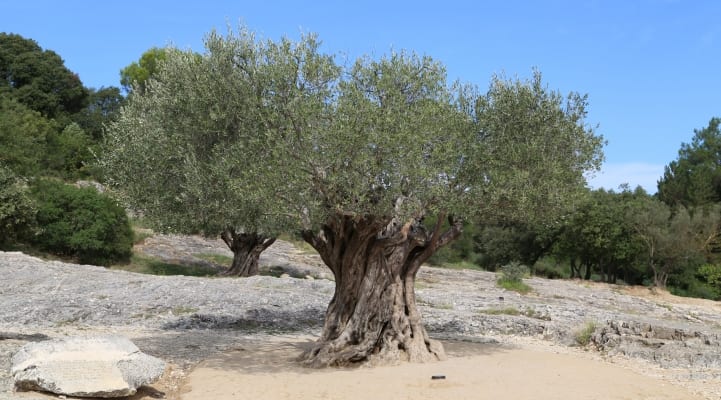
The olive tree can be easily recognised by its elongated, oval leaves and by its greyish, gnarled trunk and branches. It thrives in the mild Mediterranean climate and therefore is primarily found in the Mediterranean where conditions are ideal. That said, huge olive groves are now also found in Latin America, Australia, Japan and the southern USA. Meanwhile, Turkey, Morocco and Syria are among the most important olive oil and olive producers outside the EU. There are over 1,000 olive varieties worldwide, with many of these only being grown very locally, in specific villages.
Green or black – why are olives different colours?
Olive trees blossom after about four years, produce their first harvest after about seven years, and only develop fully after about 20 years. But, what determines the colour of the olives? Will they be green, black or possibly even purple? This is a very simple question answer: olives are green if they are harvested before they are fully ripe and the longer they are left to ripen, the more they change colour, turning purple and then black. From a taste perspective, green olives are extremely fruity, whereas black ones tend to be more peppery. The way olives are stored after harvesting (e.g. in garlic, herbs, etc.) also adds to their flavour.
A word of warning in relation to black olives: their colour might have been given a helping hand. The olive industry often colours green olives with iron salts to turn them black. This is the case with most pitted black olives, and the cheaper varieties found in cans and jars. When buying olives, you should look out for the word ‘blackened’, which has to be added to the label if olives have been modified in this way.
Olives are good for you
Even though olives taste so delicious, they cannot be eaten straight from the tree as they are incredibly bitter. After harvesting, olives must be cured in a salt solution before they are suitable for consumption. Although black olives contain slightly more fat (about 45 grams of fat per 100 grams), it is in the form of unsaturated fatty acids, and these are extremely good for you because they have a positive effect on cardiovascular health. In Spain, people are actually advised to eat seven olives a day for good health. Olives are always a special treat and can be used in many ways: in salads, to accompany cold dishes, on pizzas, with tomatoes and aubergines, or on cocktail sticks with cheese as a snack.
Far more than a tasty morsel
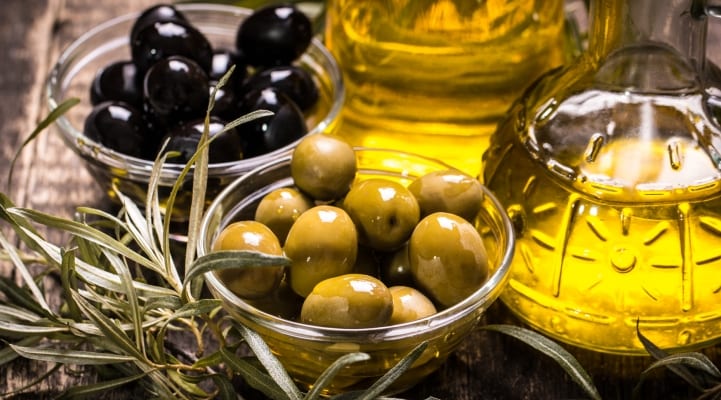
The more you delve into the world of the olive, the more fascinating it becomes – it turns out there are actually vast numbers of olive-related products on the market! To start with there are the different types of oil and table olives, of which there are many: olives marinated with garlic and various herbs, stuffed with sheep’s cheese, ‘natural’ with a stone etc.
Recently however, the cosmetics industry has been discovering the benefits of olive oil to a greater and greater extent, most likely due to the increasing demand for natural cosmetics. Nowadays, olive oil is used to make soaps, shower gels, shampoos, sunscreens and after sun lotions. And, the virtues of the olive are not restricted to their irresistible taste and a host of indulging beauty care products: it’s not only the fruit of the olive tree that’s so highly sought-after, but also its wood. Beautiful plates, dishes and chopping boards are all made from stunning olive wood with its distinctive grain.
Storing olives:
Table olives can be stored for up to 40 days in the top section of a refrigerator.
When it comes to storing olive oil, you should always make sure that bottles are tightly sealed, as some constituents are susceptible to oxidation when exposed to oxygen; also store bottles away from direct sunlight to avoid the loss of antioxidants. Storage temperatures over 25°C should most definitely be avoided; ideally, store your olive oil somewhere cool, such as in a cellar, at a minimum temperature of 12°C. You can keep olive oil in the fridge at between 5°C and 8°C, but you should be aware that at temperatures below 10°C, depending on the oil’s particular fatty acid composition and wax content, olive oil will start to solidify and turn cloudy. Returning the olive oil room temperature will quickly restore its fully liquid state and the oil’s quality will not be affected.
Olives: what’s in them?
100 grams of green olives consist of about 13 % fat, largely unsaturated fatty acids. They also contain vitamins A, B1, B2, B6, C and E, pantothenic acid and folic acid, as well as minerals such as potassium, magnesium, calcium, iron, sulfur and chlorine.

